Mini India: Which Indian City Holds That Nickname?
Mini India City Comparison Tool
Which Indian City is Your Perfect Mini India?
This tool compares cities that claim the "Mini India" nickname based on your priorities. The article explains why Prayagraj is often considered the most comprehensive "Mini India," but other cities also have strong claims.
Your Perfect Mini India
Score: 0/4Based on your criteria, is the best match for your interests. This city offers the strongest combination of in the region.
Why this city wins:
When you hear the nickname “Mini India,” many people point to Prayagraj, a historic city at the confluence of the Ganga, Yamuna, and Saraswati rivers, that embodies the cultural, religious, and linguistic diversity of the entire nation. Located in the heart of Uttar Pradesh, this city offers a micro‑cosm of India’s traditions, languages, and festivals-all packed into a compact urban space.
What does “Mini India” actually mean?
The term isn’t a marketing gimmick; it’s a shorthand for a place where you can experience the breadth of Indian life without hopping across the subcontinent. A Mini India city will typically have:
- Multiple major religions co‑existing and celebrating together.
- A blend of North‑Indian and South‑Indian culinary influences.
- Languages ranging from Hindi to regional dialects, often spoken side‑by‑side.
- Annual festivals that mirror national celebrations, from Diwali to Eid.
Prayagraj ticks every box, making it a perfect candidate for the nickname.
Geography that brings the nation together
The city sits at the Ganga River and Yamuna River confluence, a spot revered in Hindu mythology. This natural meeting point, called the Triveni Sangam, has attracted pilgrims for centuries, symbolizing the merging of different cultures just as the rivers merge.
Beyond the holy waters, the city’s layout reflects a mix of colonial heritage and modern development. British‑era architecture sits alongside newly built shopping malls, mirroring India’s own blend of old and new.
Why Prayagraj earns the nickname
Three major factors give Prayagraj its “Mini India” status.
- Religious pluralism - The city hosts the massive Kumbh Mela, the world’s largest gathering of faiths, drawing millions from every corner of the country. While Hindu rituals dominate, you’ll also find Sikh, Jain, and Buddhist processions sharing the same riverbank.
- Linguistic variety - Hindi is the lingua franca, but Urdu, Bhojpuri, and even English pepper everyday conversation. Local newspapers publish in multiple scripts, and street signs often include both Devanagari and Persian‑Arabic.
- Culinary cross‑pollination - From North‑Indian kebabs to South‑Indian dosa stalls, the food scene mirrors the nation’s palate. Street vendors serve samosa with chutney beside sweet poha, while upscale restaurants experiment with regional fusion.
These elements together create a living snapshot of India’s broader identity.
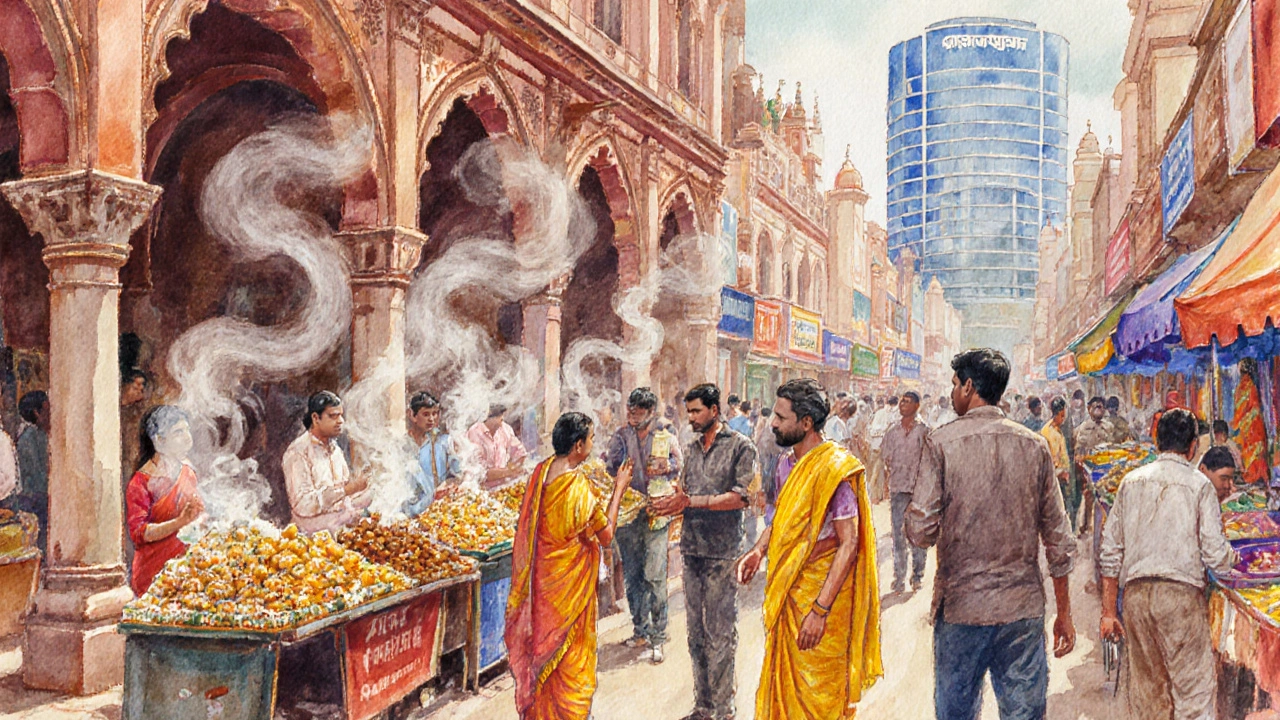
Historical and cultural highlights
Prayagraj’s history stretches back to the ancient kingdom of Koshala, and the city has been mentioned in the Mahabharata as “airikā.” The British renamed it Allahabad during colonial rule, a name that still appears in many older records. In 2018, the municipal corporation officially reverted to Prayagraj, reinforcing its indigenous roots.
Key sites include:
- All Saints Cathedral - a Gothic‑style monument built by the British, showcasing colonial architecture.
- Harishwar Temple - one of the oldest Hindu shrines on the Ganga bank.
- Alopi Devi Temple - where folklore says a queen vanished, leaving only a sandal.
- Anand Bhavan - the historic residence of the Nehru‑Gandhi family, now a museum.
Each landmark tells a piece of the nation’s story, from ancient myth to modern politics.
Demographic mosaic
The city’s population hovers around 1.2million, but the daily footfall during festivals can double that number. A 2023 census report shows:
- Hindi speakers: 72%
- Urdu speakers: 15%
- Other regional languages (Bhojpuri, Awadhi, etc.): 13%
This multilingual environment means you’ll hear a rich tapestry of prayers, songs, and market calls, just as you would traveling from Delhi to Chennai.
Other Indian cities also called “Mini India”
Prayagraj isn’t the sole claimant. Several other towns market themselves with the same moniker, each emphasizing a different facet of the nation.
| City | Reason for nickname | Key attractions | Population (2024est.) |
|---|---|---|---|
| Prayagraj | Religious & cultural crossroads | Kumbh Mela, Triveni Sangam, historic forts | 1.2M |
| Mysore | Blend of royal heritage and modern industry | Mysore Palace, Dasara Festival | 1.0M |
| Nagpur | Geographic centre of India, multilingual vibe | Deekshabhoomi, Zero Mile Marker | 2.5M |
| Varanasi | Spiritual heart of Hinduism and thriving arts scene | Ghats, Kashi Vishwanath Temple | 1.3M |
While each city offers a valid claim, Prayagraj stands out for the sheer intensity of its religious gatherings and linguistic plurality, making it the most comprehensive “Mini India.”
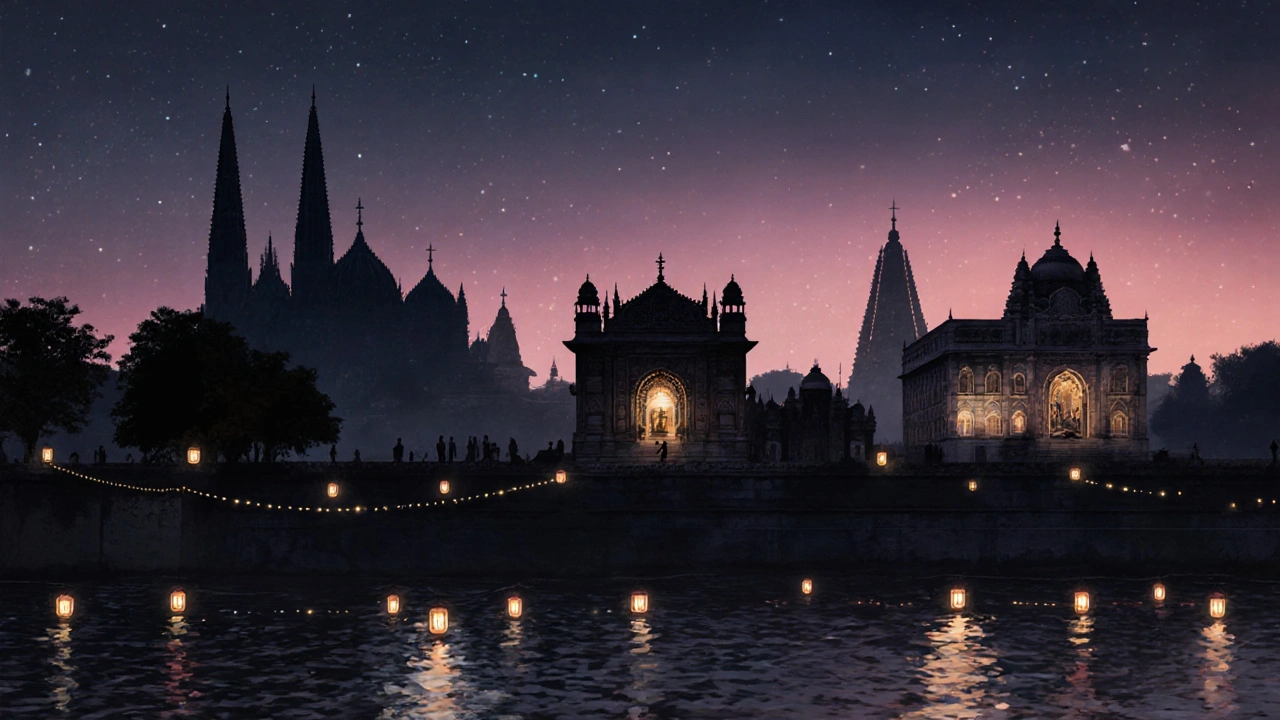
Visiting Prayagraj: Practical tips
- Best time to visit - October to March, when the weather is pleasant and major festivals take place.
- Getting there - Direct trains from Delhi, Lucknow, and Kolkata arrive at Prayagraj Junction. The nearest airport is in Prayagraj itself, with daily flights from major metros.
- Local transport - Auto‑rickshaws and city buses are inexpensive. For longer trips, hire a car with a driver for flexibility.
- Dress code - Modest clothing is recommended near religious sites; carry a scarf for women if you plan to enter temples.
- Food safety - Trust popular stalls with long lines. Try the local speciality “kashmiri chaat” and the sweet “jalebi” made fresh daily.
These pointers help you absorb the city’s vibe without getting lost in the crowd.
Key Takeaways
- Prayagraj is the most widely recognized city nicknamed Mini India because it mirrors the country’s religious, linguistic, and cultural spectrum.
- The Triveni Sangam and Kumbh Mela showcase India’s spiritual unity.
- A multilingual environment with Hindi, Urdu, and regional dialects reflects the nation’s linguistic fabric.
- Compared to other claimants like Mysore and Nagpur, Prayagraj offers the richest blend of traditions in a single locale.
- Travelers can experience the full Indian mosaic in a few days with proper timing and basic planning.
Frequently Asked Questions
Why is Prayagraj called the “Mini India”?
Because the city hosts a convergence of religions, languages, cuisines, and festivals that together represent the broader Indian experience.
When is the best time to witness the Kumbh Mela in Prayagraj?
The Kumbh Mela occurs every 12 years; the most recent one was in 2025. Visiting a few weeks before or after the main bathing dates lets you avoid the peak crowds while still feeling the festival’s energy.
What languages are commonly spoken in Prayagraj?
Hindi dominates, but Urdu is widely used in literature and daily speech. You’ll also hear regional dialects like Bhojpuri and Awadhi, especially in the older neighborhoods.
How can I travel from Delhi to Prayagraj?
The fastest option is a direct flight (about 1.5hours). Trains are also popular; the Shatabdi Express reaches Prayagraj in roughly 8hours. Both options run multiple times daily.
Are there any safety concerns for tourists?
Prayagraj is generally safe, especially around major tourist sites. Keep an eye on your belongings during large gatherings, respect local customs, and avoid isolated areas after dark.
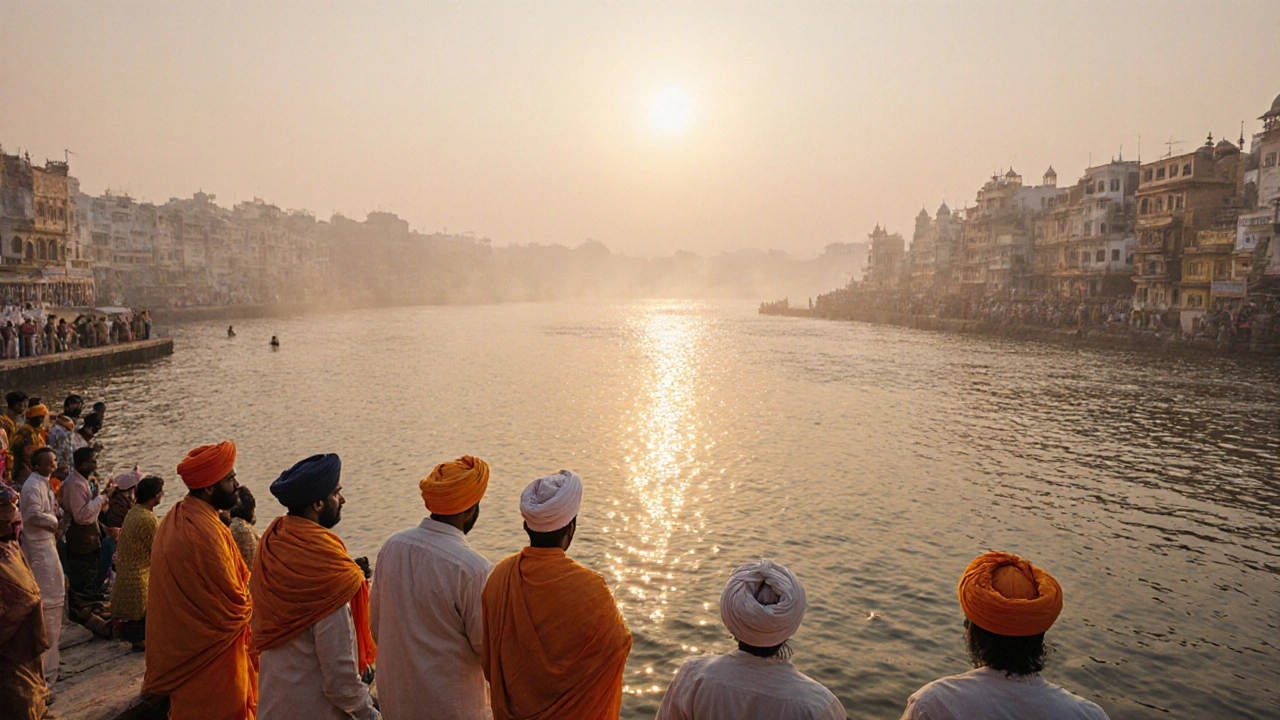


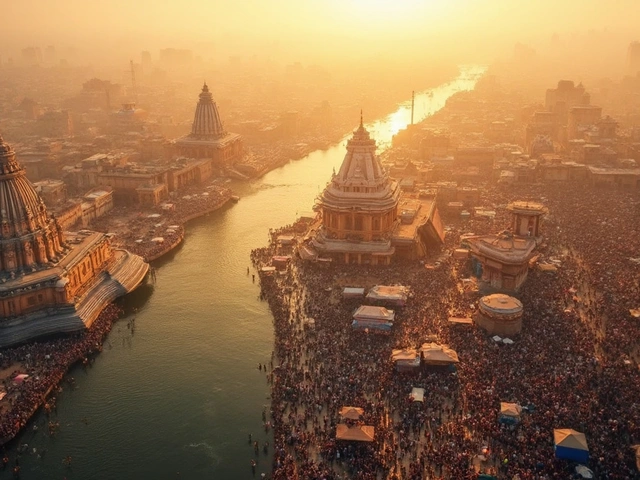
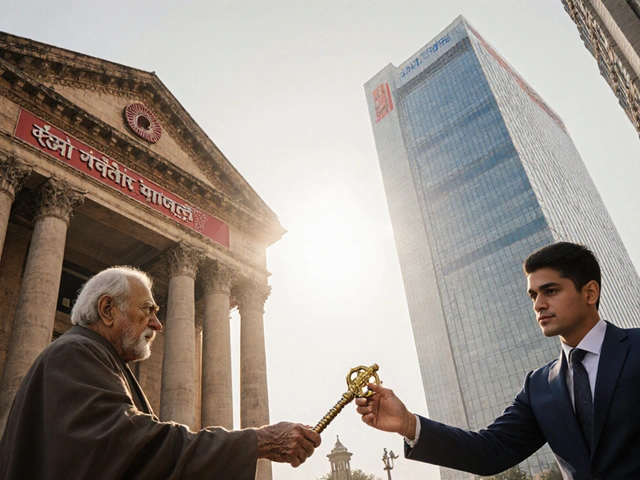
10 Comments
Kathy Yip
October 14 2025Prayagraj truly feels like a tiny Inda packed in one riverbank.
Natasha Madison
October 15 2025The portrayal of Prayagraj as "Mini India" is just another subtle move by the global elite to dilute genuine Indian greatness and spread a watered‑down narrative.
mani kandan
October 16 2025The confluence of the Ganga, Yamuna, and the mythic Saraswati at Prayagraj creates a natural metaphor for India's pluralistic spirit, where each river brings its own cultural sediment to the shared basin.
From a historical perspective, the city has been a cradle of Hindu epics, a colonial administrative hub, and now a modern urban center, illustrating the layers of time that coexist within its streets.
Religiously, the Kumbh Mela convenes millions, embodying the principle that diversity can be celebrated en masse without erasing individual identities.
Linguistically, one hears Hindi interwoven with Urdu, Bhojpuri, and Awadhi, each dialect adding a unique hue to everyday conversation.
The culinary scene mirrors this tapestry, with street vendors offering both kebabs and dosas, allowing a palate that traverses the subcontinent in a single bite.
Architecturally, the Gothic arches of All Saints Cathedral sit beside the simple mud‑brick homes of older neighborhoods, showcasing the blend of imperial legacy and indigenous resilience.
Economically, the city balances traditional markets with emerging tech parks, indicating a shift toward a diversified livelihood model while honoring its mercantile roots.
Socially, festivals like Diwali and Eid are observed side by side, demonstrating a communal rhythm that respects each faith's cadence.
Educational institutions here teach in multiple languages, preparing students for a multilingual nation and reinforcing cultural fluency.
Transportation networks, from auto‑rickshaws to intercity trains, connect the city to the broader Indian landscape, facilitating the flow of ideas and people.
Environmental challenges, such as river pollution, are addressed through community-driven clean‑up drives, reflecting a collective responsibility toward shared resources.
Tourism initiatives emphasize responsible travel, urging visitors to engage with local customs and preserve the sanctity of sacred sites.
Political discourse in Prayagraj often mirrors national debates, with local leaders championing both regional interests and pan‑Indian agendas.
In terms of demographics, the city’s population of approximately 1.2 million expands dramatically during pilgrimages, temporarily turning it into a micro‑cosm of the entire country’s crowd dynamics.
Overall, Prayagraj stands as a living laboratory where the myriad facets of Indian identity converge, making it a compelling embodiment of the "Mini India" concept.
Rahul Borole
October 17 2025For anyone planning a visit, it is advisable to schedule travel during October to March when the climate is temperate and the major festivals are in full swing; this optimises both comfort and cultural immersion.
Bhavishya Kumar
October 17 2025Note: the previous comment should use a semicolon rather than a comma after "comfort and cultural immersion" to separate two independent clauses correctly.
ujjwal fouzdar
October 18 2025Imagine standing on the banks of the Triveni Sangam at dawn, the mist swirling like thoughts in a philosopher's mind, each ripple whispering tales of ancient sages and modern dreamers alike.
Anand Pandit
October 19 2025That image perfectly captures the soul‑stirring vibe of Prayagraj; I encourage all travelers to soak in that serene sunrise and let it inspire their own journeys.
Reshma Jose
October 20 2025Honestly, if you’re still debating whether to call Prayagraj the real Mini India, just look at the bustling markets where north meets south in every dish.
Eka Prabha
October 21 2025While popular narratives glorify the city’s diversity, one must critically examine the covert agenda behind branding Prayagraj as a "micro‑national" construct, a phrase engineered to promote homogenized tourism frameworks under the guise of cultural celebration.
Bharat Patel
October 22 2025In the end, every traveler who walks its streets adds a new line to the ever‑growing story of Prayagraj, reminding us that places, like people, are defined by the journeys they host.